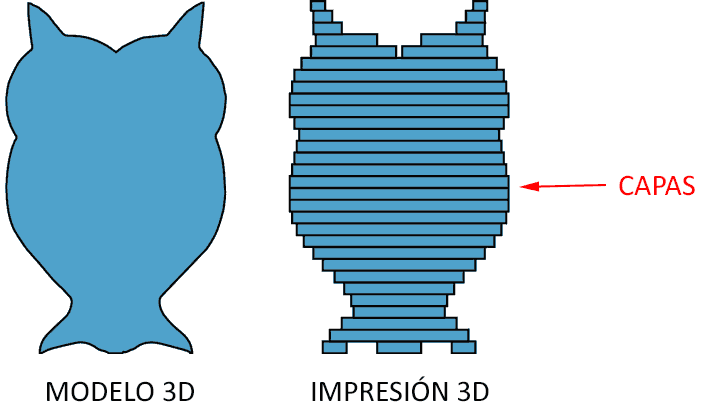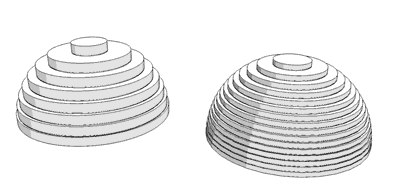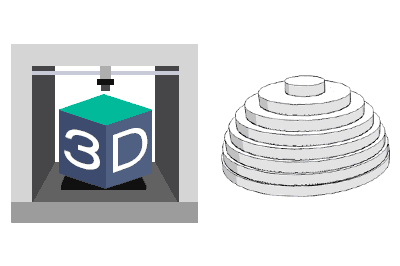We continue with the tutorials from the 3D printing area, looking at the parameters involved in 3D printing.
We start with one of the simplest, layer height. Despite being one of the simplest, it is one of the most important parameters as it has a great impact on the printing process.
We already saw previously in the entry about the slicer, that during the printing process the 3D model is divided into layers that will be traced independently by the hotend.
As its name indicates, the layer height is precisely the thickness of each of these slices. Subsequently, the hotend will trace each of these layers, forming our 3D piece.

The first aspect to consider is that, logically, our layer height cannot be higher than the hole in our nozzle. This is a simple matter of symmetry.
On the other hand, the most important effect of the layer height is the quality of our 3D print, especially in the curves on the Z axis.
In a 3D printed piece, the finish quality is much better in the X and Y axes than in the Z axis. This is due to the discretization effect of printing the piece as a set of stacked layers.
As seen in the image, the finer the layer thickness, the better the quality we will obtain in the finishes of curved surfaces on the Z axis.

However, this has a direct effect on the time required for printing. Half the layer height will mean twice the number of layers, and therefore, double the printing time.
These two, print quality and printing time, are the two most important consequences of layer thickness. But they are not the only ones.
The layer thickness also influences the mechanical behavior of the piece. Thus, pieces with greater layer thicknesses are stronger.
On the other hand, it influences the simplicity of printing, or the probability of process failure. Not in all cases, but in general, it is easier to print a piece the greater the layer thickness.
Finally, it also impacts the adhesion of the piece to the bed surface. Generally, we can say that greater thicknesses favor the adhesion of the first layer.
For a nozzle with a normal thickness of 0.4mm, the usual layer thicknesses are 0.06mm for very fine finish, 0.1mm for fine finish, 0.15-0.2mm for normal finish, and 0.3mm for draft quality.
In summary, as we have seen, except for the finish quality on the Z axis, all the other properties of the piece worsen as the layer thickness decreases.
Therefore, it is a matter of reaching a compromise between print quality and the rest of the characteristics of the printed piece and the printing process.
